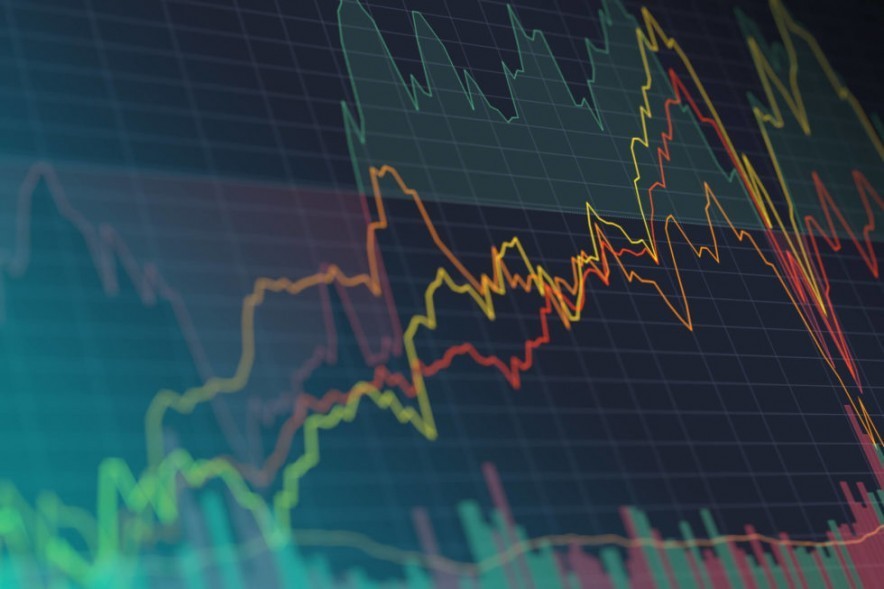TerraUSD Prices Are Falling—What’s the Future of the Stablecoin?
May 13, 2022, 12:50am
TerraUSD prices have fallen dramatically over the past week. Can the stablecoin recover its $1.00 price peg?
TerraUSD, a popular stablecoin designed to maintain parity with the U.S. dollar, is rapidly falling in value. The losses appear to be caused by widespread sell-offs of an associated asset, LUNA, and the coin’s future is now unclear.
Here’s what has happened so far, and what could happen next.
Mass Withdrawals Caused Price Drop
TerraUSD was conceived as an algorithmic stablecoin. Like its competitors, it is intended to maintain a price of $1.00 in line with the U.S. dollar.
Most stablecoins such as Tether (USDT) and USDCoin (USDC) are collateralized, meaning that they are backed by the U.S. dollar and other assets. TerraUSD, by contrast, is an algorithmic stablecoin that derives value from other mechanisms—mainly an arbitrage system involving the related LUNA cryptocurrency.
TerraUSD’s experimental approach seems to have led to the coin’s downfall. Massive withdrawals on the DeFi platform Anchor and similar protocols appear to have disrupted TerraUSD’s economics, causing the stablecoin’s price to fall.
Though TerraUSD’s price began to lose price parity on the weekend, it first saw significant losses on Monday, May 9, when its price fell as low as $0.74. On Tuesday, it fell as low as $0.69, and on Wednesday, it fell as low as $0.30. Despite intermittent recoveries, the asset’s price is unstable and a full recovery is not guaranteed.
The trend has also had an impact on Bitcoin and the wider crypto market. As of May 12, Bitcoin is priced at $28,300—down 29% over the past seven days. Bitcoin is also down 60% from its all-time high of $69,000, which was last seen in November.
In addition to affecting prices, these events also threaten Terra’s security. Validators briefly halted the Terra blockchain on Thursday to protect against governance attacks. Reduced LUNA prices could have allowed hostile investors to buy out the blockchain’s governance and vote against its own interest.
The blockchain has since been restarted with a new emergency upgrade, which prevents this risk by preventing new governance delegation.
Recovery Plans Are In Place
In the wake of these rapid price drops and fluctuations, various courses of action have been undertaken to help TerraUSD regain its dollar peg.
On Sunday, the Luna Foundation Guard announced that it would commit $1.5 billion to TerraUSD and its recovery. It intended to loan half of the above amount to trading firms and use the other half to accumulate Bitcoin as markets normalized. Both actions could help TerraUSD reach its $1.00 price peg, but so far have failed to do so.
On Wednesday, Terra announced a more comprehensive recovery plan. That plan will see the project attempt to absorb the TerraUST supply. This will involve increasing the project’s LUNA minting capacities, which will, in turn, allow for TerraUST tokens to be destroyed or “burned,” thereby raising prices.
Other recent updates suggest that the project will seek outside funding, though it is unclear who will provide that funding.
Exchanges and Regulators React
TerraUSD’s downfall has come to the attention of the rest of the crypto industry as well as financial regulators and other entities.
Various cryptocurrency exchanges have reacted to the crisis. Binance, the largest crypto exchange in operation, suspended withdrawals on the Terra network on Monday. The company cited high traffic on the Terra blockchain as the reason for the suspension, though this was likely due to “panic” buying and selling that has resulted from the crisis. The exchange re-enabled withdrawals on Tuesday.
On Thursday, Binance announced that it will delist and forcibly settle LUNA perpetual contracts. However, it has not delisted LUNA or UST from its main exchange.
Gemini, meanwhile, has discounted rumors that it lent $3 billion worth of Bitcoin to Blackrock and Citadel in such a way as to cause TerraUSD’s failure. Blackrock and Citadel have denied the rumors as well, stating that they do not trade in UST.
Janet Yellen, Secretary of the U.S. Treasury, has also commented on the TerraUST saga. Yellen said this week that Terra’s failure “illustrates that this is a rapidly growing product and [that] there are rapidly growing risks.” She used the incident to call for more thorough stablecoin regulations.
Whether TerraUSD will recover or collapse entirely is unclear. However, the result will set a precedent for future stablecoin crises regardless of the outcome. If TerraUSD fails, it could push investors to rely on stronger stablecoins. If it successfully recovers, it may prove that stablecoins are more robust than originally believed.





